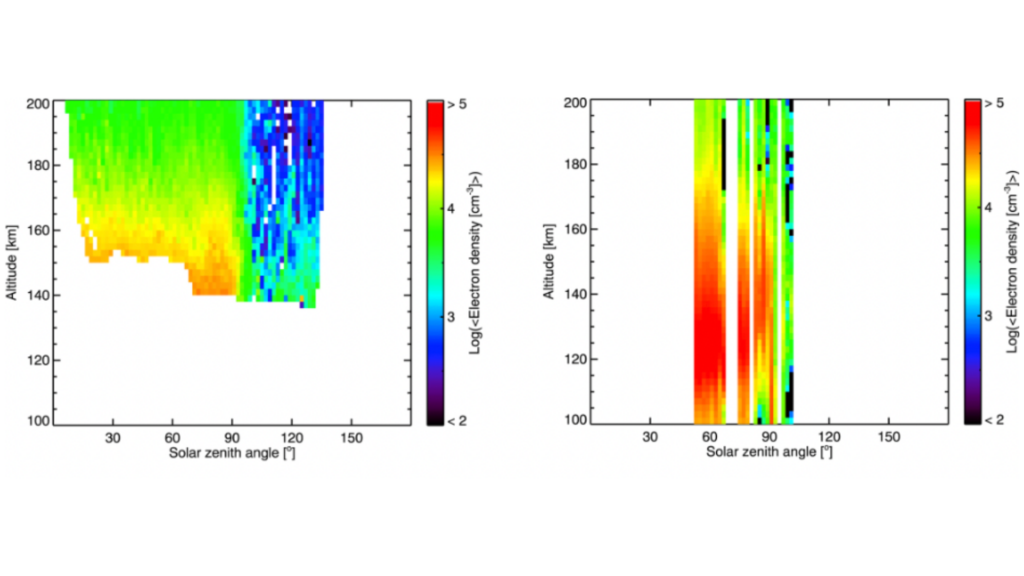The MAVEN team is always conducting exciting, new scientific research. Many of these results are then published in leading academic journals. Each month, we’ll be highlighting interesting papers in a jargon-free format. In this Publication Highlight, we looked at “Electron Densities in the Ionosphere of Mars: Comparison of MAVEN/ROSE and MAVEN/LPW Measurements”, which Marianna Felici and colleagues published in JGR Space Physics in March 2022.

Credit: Felici et al, Figure 5
‘Always check your work’ is a common phrase in STEM research to make sure what you are presenting is accurate. When studying another planet, it’s even more important to double check your results to understand whether the phenomenon you are observing is truly from the planet—or potentially instrument error.
In a new publication, Felici et al. used two tools aboard MAVEN—the Radio Occultation Science Experiment (ROSE), a remote-sensing investigation, and the Langmuir Probe and Waves (LPW) in-situ instrument—to double check whether the electron densities that MAVEN measured in the ionosphere of Mars are accurate.
The ionosphere is a weakly ionized plasma, formed by solar extreme ultraviolet fluxes and soft X-rays, which is embedded in the upper atmosphere of Mars. This layer is known to experience many processes, from interacting with the solar wind to dust storms. Learning about the ionosphere is an important piece to understanding the evolution of the planet’s atmosphere, as many atmospheric escape processes involve this layer. Understanding solar system ionospheres has motivated scientists to deploy a variety of instrument types on many interplanetary missions.
Because both instruments can measure the electron density profiles of Mars’ ionosphere, Felici et al. compared the LPW and ROSE data sets. Electron density profiles provide the electron density —the number of electrons in a unit volume— at different altitudes of Mars. These profiles help scientists understand the ionosphere’s spatial and temporal variability, chemistry, and its response to processes coming from space (such as the solar wind) and the surface (like dust storms).
Due to differences between the two instruments, their electron density measurements were never from the same place and time. To make an apples-to-apples comparison, Felici et al. compared the electron densities measured by LPW and ROSE at the same solar zenith angles and altitudes.
They found that the differences between the ROSE and LPW measurements show that the systematic errors of these instruments are negligible, and the density variance is due to the ionosphere itself. This comparison allowed Felici et al to conclude that the dawn ionosphere is more variable, possibly due to the “waking up” of the various neutrals suddenly seeing the Sun.
It goes to show that two heads — or instruments, in this case — are better than one, especially when studying another planet.
To read Felici’s publication, visit: https://agupubs.onlinelibrary.wiley.com/doi/10.1029/2021JA030155
By: Willow Reed – MAVEN Communications Lead

